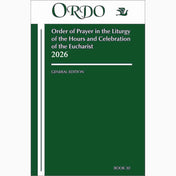From the desk of the Tar Heel disciple:
November 2025
In this third and final blog on Masses for the Dead, let us consider the custom of Masses celebrated in November for All Souls, for which envelopes are often distributed in parishes.
Concerned about the development of abuses in connection with Masses with “collective intentions,” the Holy See issued new directives in 1991. Perhaps because of a great number of requests for Mass intentions in some places, some priests began the practice of combining several intentions received, along with the stipends for these intentions, in the offering of but a single Mass. The Holy See made it clear that this can only be done if each one of the individual donors is aware of what is happening and accepts the same. It also stated that there can be no more than two such “collective intention Masses” in a parish each week. Finally, and just as important, the same document made it clear that the priest can only keep one of the stipends among the many combined. The other stipends must be handed over to the bishop.
This naturally raises the question about what is happening with the All Soul’s Day envelopes. And in this matter, there appears to be great confusion among many priests and people. If a particular Mass is offered for all the names submitted on these envelopes, then the rules about collective Mass intentions apply. But in some places, an individual Mass is not offered, but the envelopes are placed, after the money has been removed, on the altar or in a nearby special shrine, either for All Soul’s Day itself and/or for the entire month of November. In this case, a diligent priest will often remember these deceased loved ones in his prayers when he offers Masses. But this is different from a Mass being offered for a particular intention. Because of the great amount of money often collected with these special envelopes, in those places where the priests has taken the entire amount as his “stipend,” the entire project is known as “Black Christmas,” after the traditional color of the vestments for a Requiem Mass. Many priests have chosen to forego this custom and turn over the entire amount collected in these envelopes to the parish or some other charity. This is certainly in keeping with the mind of the church in its more recent regulations regarding Mass stipends.
Finally, a word about “Gregorian Masses”: inspired by Pope St. Gregory I (590-604), there has been a custom in some circles of offering a series of 30 uninterrupted (i.e., daily) Masses for the repose of the soul of a deceased loved one. Because of the difficulty of scheduling in a typical parish, such Masses are most offered in monasteries, religious communities, and by retired priests. If a day is missed, the commitment on the part of the priest includes having to begin the series (of 30 Masses) again. It is customary to give a larger stipend for this kind of request, given the greater commitment. While it is only superstitious to think that at the conclusion of this series a soul is “automatically” released from Purgatory, nevertheless, the offering of 30 Masses in this manner is considered by the Church to be a pious and worthy custom.
Let us never fail to pray for the dead: “Eternal rest grant unto them a Lord and let perpetual light upon them.



